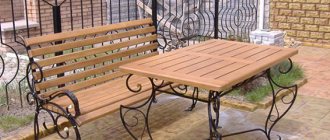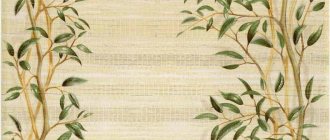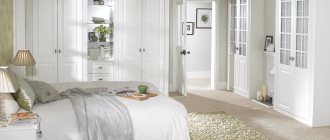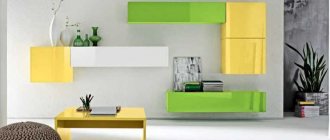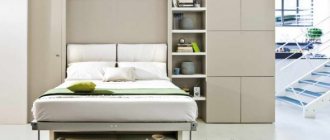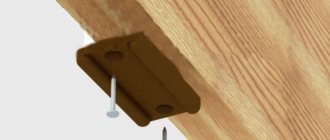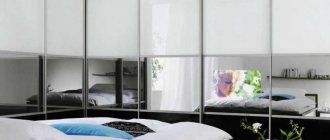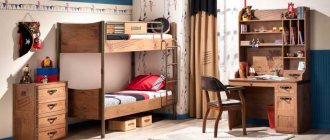What is cabinet furniture, definition
You can find out in detail what cabinet furniture is and photos on thematic resources on the Internet. In short, these are products with a rigid body or frame. The frame box is made up of horizontal and vertical elements. Back walls, doors, decorative elements, and fittings are attached to the base.
which refers to cabinet furniture, brings maximum functionality to the interior. The furnishings can be intended for a specific room or be universal, used for storing objects, things, relaxation, work, study or eating.
What does cabinet furniture mean for a modern person? Practicality, convenience, aesthetics.
Features of choice
It’s not enough to just point to the photo you like and purchase a similar set. You need to approach the issue of choice wisely so that the purchased bed, wardrobe, chest of drawers ideally meets your requirements and the features of the room layout.
Cabinet products include everything except upholstered furniture. We offer you several basic recommendations that will help you make an informed purchase.
- Functionality. Some people put it in first place among the selection criteria, while others pay minimal attention to the issue of functionality. And the latter are wrong here. Practicality plays a huge role, because if the same closet is incredibly beautiful, but lacks the ability to accommodate all your things inside, you will have to look for separate places to store them. But a closet is just a closet to store clothes.
- Workmanship. We have already talked about materials, so be guided by them and your own wallet. Ask the store for documents, certificates, check the quality of not only the main materials, but also fasteners and hooks.
- Dimensions. The choice of the size of the housing elements depends on your needs. If you live alone and have few things, there is no point in buying huge wardrobes. For a large family, it is worth considering the option of large, roomy furniture.
- External characteristics. Having decided on the previous points, now choose based on external data. Just be sure to combine aesthetics with the selection criteria above.
Related article: Connecting a solid fuel and gas boiler
Cabinet furniture is practical, multifunctional and beautiful. All that remains is to choose from the presented assortment, and if you cannot find the ideal option, create it yourself to order.
The best posts
- We are building a country toilet: projects, drawings, dimensions
- Budget bathroom renovation: photo examples
- Knitting “honeycomb” pattern: description and diagram of purl stitches with video
- How to crochet a circle for beginners: elastic pattern step by step with video and photo
- Connecting an RJ-45 internet socket and crimping the connector
- New 2021: wooden bathtub [description+photo]
- DIY bookcase: selection of materials, preparation of parts, installation
- How to sew a summer top with your own hands: sewing pattern
What cabinet furniture is made of: materials
- Furniture board. Wood based sheets. Durable, resistant to external influences, practical material. Hypoallergenic, which means: cabinet furniture does not emit harmful substances during operation;
- Chipboard with veneer covering. It has an affordable price, durability, high performance characteristics;
- MDF. Medium density fiberboard, pressed under pressure. Durability, aesthetics;
- Solid wood. The most expensive version of the material, which has high environmental friendliness, quality and effectiveness.
Varieties
Modern cabinet furniture consists of separate sections (segments), which makes it possible to create unique ensembles. For example, connect a rectangular wardrobe with a corner wardrobe or fit a chest of drawers into the wall. There are several types of prefabricated structures:
- Block-based (or blockable). These are sets of separate sections, each of which is fully equipped (shelves, drawers, fronts). Block furniture includes some types of cabinets, pencil cases, hanging cabinets, display cases, shelves, cabinets, and chests of drawers. The main difference is that some blocks can create complete combinations or act as an independent piece of furniture.
- Prefabricated or combined models. Representatives of this type are wardrobes, free-standing wardrobes, cabinets, bureaus, modules for sets, and so on. Objects are assembled from flat parts, creating a single structure. The peculiarity is the absence of double walls at the junction of sections.
- Shelving options. Such furniture consists of load-bearing sides connected by shelves, cabinets, storage sections, rods, and components. This includes large-sized products such as dressing rooms, pantries, and other types that contain various storage compartments. For example, shelves are adjacent to drawers or hinged cabinets.
- Modular products. This is an ideal option for organizing space. Separate modules with different functionality, but made in the same style, create a harmonious set of necessary cabinet furniture. Moreover, each section is an independent element. A good example is ordinary furniture walls.
Interesting designer furniture, advantages and features
In addition to the listed varieties, there are transformers and built-in furniture. The first option is objects built into the room, for which niches or other layout features are used. The second is products that can change functionality or dimensions (folding sofa, chair-bed).
Block
Combined
Shelving
Modular
Built-in
Transformer
In addition to design, types of modern cabinet furniture differ in purpose. Exist:
- single models;
- sets in the same style;
- headsets.
A set is called cabinet products designed in the same style and intended for several rooms at the same time, for example, a bedroom, living room, hallway. Furniture for a separate area or room is called a set. Sometimes all cabinet products are called modular, but this is not always true. Differences in purpose and design.
Single model
Set in one style
Set
Cabinet furniture: what you need to know when choosing
When purchasing, pay attention to the following parameters:
- Material. The strength and durability of products depends on it. Choose modern high-tech safe materials;
- Functionality. The interior item must optimally correspond to the purpose of purchase, be comfortable, and practical;
- Accessories. The service life depends on the quality of the hinges, handles, and guides. Movements should be carried out smoothly, silently, without unnecessary effort, and easily adjusted;
- Manufacturer. Experienced large manufacturers use high-tech equipment, supply high quality products, modern designs, worked out to the smallest detail.
Materials
Most often, such models are made from laminated chipboards. Entirely wooden specimens are extremely rare and belong to elite goods. Sometimes natural wood and chipboard are combined, making only facades for cabinet furniture from solid wood.
Types and characteristics of computer furniture, basic equipment
Modern materials:
- The most popular is laminated particle board. High-quality chipboard products can last 10–15 years. At the same time, furniture made from them is not very heavy and can (within certain limits) withstand high humidity. The main advantage is the affordable cost.
- MDF furniture costs a little more, but the boards are stronger and more reliable. Unlike chipboard, the material allows for fine finishing (carving, inlay) and wide variations in shape.
- High-quality cabinet furniture is made from solid wood. Beech, pine, walnut, and hornbeam are suitable for this. Environmentally friendly and very attractive material. With proper care it will last for several generations. The disadvantages include the large weight of the products and the very high cost.
- For furniture in a modern style (high-tech, minimalism, modernism) glass, plastic, and metal are used. The materials can decorate a room for any purpose (office, residential building, public buildings). Disadvantages include the high cost of some designer models and high maintenance requirements. For example, scratches on glass or plastic cannot be masked, unlike wood.
Caring for cabinet furniture depends on the material it is made of. With the help of modern means, you can extend the service life and maintain the attractive appearance of products even at home.
For finishing facades, solid wood, wood boards, mirrors, plastic, metal, and rattan (rattan palm vine) are used. The choice of material depends on the purpose and style of the furniture. For example, a regular or corner wardrobe with mirrored doors would be suitable for a bedroom; for a kitchen it would be more practical to purchase plastic or laminated chipboard. Natural wood is more appropriate in a living room or office. A wide range of facades for cabinet furniture and corresponding photos will allow you to choose an option that suits your style, quality and budget.
Chipboard
MDF
Array
Glass, metal
Plastic
Rattan
Expocentre Fairgrounds brings together furniture industry professionals
Cabinet furniture is a stationary, massive product assembled from panels, the material for which can be fiberboard, chipboard or natural wood. These structures are placed in various rooms, such as offices, bedrooms, hallways, living rooms, etc. Such products are used as containers for things and objects.
At the Moscow exposition, cabinet furniture will be represented by cabinets, tables, benches, chests of drawers, shelving, dressing table, cabinets made of especially durable materials. All products demonstrated at Expocentre are famous for their reliability and long service life.
Cabinet furniture is produced for both home and office. A very important point when choosing a product is its appearance. Today there is a huge selection of room furnishings. The designs are developed in a variety of designs and colors. Everyone will be able to find a product that will suit the interior and satisfy all its requirements.
Modern cabinet furniture is produced in all kinds of styles: classic, modern, country, hi-tech, techno, etc. Buyers have the opportunity to purchase ready-made products or create custom designs.
Expocentre Fairgrounds is worth visiting this fall for all representatives of the furniture industry who are striving to develop their business in the right direction. A professional exhibition is a storehouse of useful knowledge on the topic under consideration.
Furniture classification
Furniture is movable or built-in products for equipping residential and public premises, gardening and other areas of human habitation. Furniture is classified (GOST 20400) according to the following main characteristics: completeness, operational purpose, functional purpose, design and technological design, materials, as well as the nature of production. As part of the standard classification carried out by the facet method, furniture is divided into independent classification groups.
According to the completeness of furniture, the standard distinguishes the following concepts: furniture product (single) and complete products, which can be presented in sets or sets.
A set of furniture is a group of products interconnected by the common architectural and artistic task of furnishing the premises, with wide variability in composition and purpose. From the products of one set, you can create different versions of furniture sets, for example, a set for the kitchen, bedroom, or children's room.
A furniture set is a group of products interconnected according to architectural, artistic and constructive characteristics, intended to furnish a certain functional area of the room (for example, a set of upholstered furniture consisting of a sofa and armchairs; a dining room set, including a cupboard, dining table and chairs; kitchen a set that combines cabinets-tables, floor and wall cabinets for dishes and food, cabinets for sinks and built-in electrical appliances).
According to their operational purpose, furniture is classified into three subgroups, combining products according to location and special conditions of use and care. For example, household furniture is characterized by increased aesthetic properties and a maximum level of operating comfort; furniture for public premises must first of all have a durable design and protective and decorative coatings that are resistant to abrasion and wet handling.
Rice. Classification of furniture according to operational purpose
Household furniture is products intended for furnishing various rooms, apartments, cottages, and for outdoor use. The following types of household furniture are distinguished: for a common room (for rooms with combined functions, for example, a dining room and a bedroom or a bedroom and an office), for a bedroom, a dining room, a living room, an office, a nursery (products whose sizes, shapes and designs correspond to age characteristics and height characteristics of children), for kitchens, hallways, bathrooms, and also cottages.
Furniture for public premises is products intended for furnishing the premises of enterprises and institutions, taking into account the nature of their activities and the specifics of functional processes. There are the following types of such furniture: medical (for hospitals, clinics and other medical institutions), laboratory (for laboratories, including educational and medical ones), for preschool institutions (kindergartens, nurseries), educational institutions (schools, colleges, technical colleges and universities), trade enterprises, public catering (canteens, restaurants, cafes, snack bars, etc.) and consumer services, hotels and health resorts, theatrical and entertainment institutions, libraries and reading rooms, sports facilities, administrative premises, waiting rooms of transport institutions, enterprises communications.
Furniture for transport is products designed to equip various means of transport.
According to their functional purpose, there are four subgroups of furniture, including products of various designs in accordance with their purpose.
Rice. Classification of furniture by functional purpose
The main purpose of storage furniture (cabinet) is to store and place various items. The following types of storage products are distinguished:
cabinet - a product, mainly with doors, for storing items for various functional purposes, including:
- wardrobes for clothes (dresses), linen, dishes, books, - kitchen cabinet - a product designed for storing kitchen and household items; can be part of the working front of the kitchen or be a separate product, - a kitchen cabinet-table - a product intended for cooking and serving, with containers for storing kitchen utensils and food products, - a cabinet for a sink (designed for installing a sink), - cabinet with display case (showcase) - a glazed product designed for storing and displaying various items,
- wardrobe partition - a product designed to divide a room into separate zones,
- wall cabinet,
- multi-purpose cabinet - a product with compartments for various functional purposes;
chest of drawers - a product with drawers for storing linen;
toilet cabinet - a product with a mirror and containers for storing toiletries;
low-height cabinet cabinet for various purposes;
secretary - a product with a folding door or a retractable board intended for performing written work;
sideboard cabinet - a product for storing dishes and table linen, the upper plane of which is used for serving work;
chest - a piece of cabinet furniture with a folding or removable top lid, designed for storing various things;
shelf - a product without a front wall, with or without a back wall, designed to accommodate books or other items.
In trade practice there are non-standardized terms:
buffet - a common type of cabinet for dishes, cutlery and table linen; a traditional sideboard is, as a rule, a symmetrical cabinet with a blank lower part and a predominantly glazed upper part; a niche for decorative items is often built into the middle zone; under the niche there are external drawers, sometimes a retractable cutting board; the depth of the upper glazed part is usually less than that of the lower one;
a buffet is a piece of wall furniture, a multi-tiered shallow shelf with sides or fences, designed for decorative display of plates and storage of lids for pots;
wardrobe (obsolete) - wardrobe;
slide (obsolete) - a piece of furniture intended for displaying ceremonial dishes and decorative items; originally it was a pyramid-shaped bookcase; later the term began to be applied to cabinets, glazed on three sides, with a mirrored back wall; The recommended name for products of this type is a cabinet with a display case, display case;
shelving is a type of furniture that is a multi-tiered system of supports and shelves; a rack one bay wide with a height of 1200-1500 mm is called a bookcase;
wardrobe - a cabinet designed for storing linen and small items of clothing and toiletry; equipped with drawers, shelves, half-drawers; the doors are solid; has a slightly higher height than a chest of drawers.
Sitting and lying furniture is designed to accommodate a person in a sitting or lying position. The following items of such furniture are distinguished:
bed - a product intended for sleeping, with a mattress, with one or two backrests:
— single bed (intended for one person), — double bed (intended for two people); sofa - a combined product with a back, designed to seat several people;
sofa bed - a sofa that can be transformed into a bed;
couch - a product with or without a head back and headrest, intended for lying;
ottoman - a wide couch with or without a longitudinal back, intended for lying;
bench - a product with or without a back and armrests, with a seat height equal to or greater than its depth, designed to accommodate several people;
stool - a product without a back and armrests, with a hard seat (or flooring), designed to accommodate one person;
banquette - a product without a back, with an upholstered seating surface, intended for one or several people;
chair - a product with or without a back, armrests, with a seat height that is functionally comfortable in relation to the height of the table (dining table, desk), intended for sitting one person;
chair - a comfortable product with or without a back, armrests, intended for sitting one person:
- work chair (working chair) - a product with armrests, with a seat height equal to the height of the chair seat,
- a chair for relaxation - a product with or without armrests, the seat height of which is less than the height of the chair seat,
- chair-bed - a product for relaxation, which in a transformed position can be used for lying,
- rocking chair;
chaise lounge - a light chair designed for reclining, transformable during use.
Non-standardized terms in the subgroup of furniture for sitting and lying down:
canape (obsolete) - a piece of furniture for seating several people, with a back and armrests; can serve as a bed; the modern name for a product of the described type is a sofa;
chaise longue - a light two-seater sofa, the purpose of which is to create comfort for conversation; •
cradle - a type of bed for a baby; the defining feature is the presence of a device for rocking;
ottoman - a piece of furniture for lying down, the backrest is replaced by pillows;
pouf (obsolete) - a version of a banquette; is a fully wrapped product used in the bedroom;
sofa - a type of sofa, a low bed for relaxation with a low back and sides (armrests); also serves for seating (up to six people).
Furniture for working and eating includes all types of tables.
A table is a product with a working surface located at a functionally convenient height, intended for eating, performing various work and installing objects. As intended. The following types of tables are distinguished:
lunch (for eating); ,
serving (for serving food and cleaning dishes);
written (for classes and written work);
coffee table (pre-sofa) - a low table to form a seating area;
toiletry - a product with a mirror and containers for storing toiletries.
Non-standardized terms for this furniture subgroup:
bureau - a type of desk; the defining feature of the device is the presence of a superstructure with shelves and drawers located on part of the working surface, and a lid covering the entire working area; a type of bureau in which the superstructure and working surface are closed with a folding rigid curved case is called a bureau-cylinder; sometimes the add-ons above the work surface are made in the form of a self-functioning cabinet, and the bottom is a chest of drawers, such a product is called a cabinet-bureau;
geridon - a round or polygonal table, often with sides, used as a stand for decorative items, toiletries or (sometimes) a tea or coffee table for one or two people; often made not on legs, but with a central post on a three-beam support;
jardiniere - flower garden; a piece of furniture designed to accommodate indoor plants; can be a table (usually with sides), a tray on legs, a lattice screen with shelves and trays;
console - wall table; its tabletop and base have a distinctly one-sided orientation, due to the placement of the table close to the wall; usually in combination with a tall mirror it is installed in the partition between the windows;
desk - a type of desk; designed for standing work, the working surface is inclined;
desk - a type of student's table, is a table structurally connected to a bench; the working surface of the desk is made inclined, as a rule, with a hinged lid above the niche;
music stand - an inclined stand for books, music, for taking notes; can be either an independent floor product or part of, for example, a desk;
bean table (obsolete) - a product primarily for handicrafts, the tabletop of which has the shape of a bean in plan; this configuration increases the ease of use of the working surface; also suitable for children's games, writing, use as a toilet, etc.;
card table (obsolete) - a product for playing cards; its square, cloth-covered tabletop can be folded in half using special card loops cut into the edges; for more compact storage, the tabletop can be rotated 90°; both layers of the upper half of the tabletop are faced and finished as front ones; The card table design is still used today, in particular, in dining tables for the kitchen; its advantage is the ability, if necessary, to double the area of the tabletop; the recommended name for a product of the described type is a table with a rotary-folding lid;
student table - a table designed to equip a schoolchild’s workplace; one of its important features is the ability to adjust the height depending on the height of the child; the tabletop is usually made with an adjustable slope;
dressing table - a tall mirror connected to a console-type table or cabinet.
Other furniture includes the following types of products:
children's playpen - a portable fence for toddlers;
hanger is a product designed to hold outerwear and hats.
In the subgroup of other furniture the following non-standardized terms are found:
bedside hanger - a floor hanger designed for temporary (at night) hanging outerwear; the inclusion of a bedside hanger in a set of bedroom furniture significantly increases its comfort;
screen - a folding portable partition for enclosing a functional area in a room. The screen doors have a frame structure and can be solid, openwork (lattice) or transparent (glazed); their height is usually slightly higher than human height.
Based on structural and technological characteristics, the following subgroups of furniture are distinguished:
collapsible - products whose design allows for repeated assembly and disassembly;
universal-prefabricated - products from standardized parts that allow the formation of furniture of various functional purposes and sizes;
sectional - products consisting of several furniture sections installed one on top of another or next to each other;
furniture section - a structurally complete furniture product that can be used in its entirety or act as an integral part of blocked products;
non-separable - products whose connections are permanent;
built-in - products built into building premises; transformable - products, the design of which allows, by moving parts, to change their functional purpose and (or) dimensions;
bent - products, the main parts of which are made by bending;
bent-glued - products in the designs of which the predominant parts are made by bending with simultaneous gluing;
wicker - products whose design is dominated by parts made by weaving.
Based on the materials used, furniture is divided into the following subgroups:
made of wood and wood materials;
made of plastics - products in the designs of which parts made of plastic predominate;
made of metal - products in the designs of which parts made of metal predominate.
Based on the nature of production, furniture is divided into three subgroups of products:
experimental - samples of new products under development, which are used to assess compliance with functional requirements and conduct tests;
serial - products produced in batches (series), while repetition of series can be provided for in advance;
mass - products produced in large quantities, continuously for a long time and without changing the design.
Cushioned furniture
Upholstered furniture – furniture products for sitting and lying, which are based on a soft element.
The following furniture can be classified as upholstered:
- sofas;
- armchairs;
- sofa beds;
- chair-beds;
- couches;
- ottomans;
- benches;
- poufs;
- banquettes.
The range of manufactured upholstered furniture is currently impressive, from standard and familiar book sofas to incredible multi-level transformers, various corner designs, semicircular and round soft corners. It is also very common to see the production of upholstered furniture with cabinet elements, a kind of hybrid, one might say.
Main components and materials of upholstered furniture:
- frame;
- filling;
- cladding;
- transformation mechanism.
Upholstered furniture frame
The frame is a supporting structure that gives the original shape of upholstered furniture.
The following materials are used to make the frame of upholstered furniture:
- solid wood;
- metal;
- plywood;
- chipboard;
- Fiberboard.
Filling upholstered furniture
To obtain a certain softness, the following elements are usually used in products:
- spring blocks,
- elastic belts,
- flooring materials,
- padding polyester,
- polyurethane foam, etc.
Upholstery of upholstered furniture
For covering upholstered furniture use:
- upholstery fabrics;
- genuine leather;
- artificial leather.
Many examples of modern upholstery materials amaze the imagination, they look so varied and elegant. Here you can find antique upholstery material with monograms and seals, and modern abstract graffiti, smooth fabrics, with pile, double fabrics with stitching, with or without a base, for every taste.
Transformation mechanism
The transformation mechanism allows you to transform upholstered furniture from a compact seating area to a sleeping area and back.
The main types of modern transformation mechanisms:
- "Book";
- "Eurobook";
- "Click-clack";
- "Forward folding";
- "Accordion";
- "French folding bed";
- "Spartacus";
- "Puma";
- "Telescope";
- "Dolphin";
- "Tick-Tock";
- "Sedalift";
- "Dionysus".
In the production of upholstered furniture, a variety of hidden and invisible materials are used; the frame is usually made of wood or metal. Recently, they have begun to be replaced by polymers, polyurethane foams of various densities, in common parlance, foam rubber, spring blocks of various configurations, horizontal springs, vertical springs made of high-strength steel, double-cone (bonel type) and smooth, glass-shaped.
We hope that the information provided not only gave a general idea of the types of furniture and the furniture industry, but also will help guide you when purchasing or ordering furniture!
If you have any questions about this topic, write them in the comments. The author will definitely answer them!
If you found this article interesting and useful, like it and share the link with your friends - this is the easiest way to say “thank you”!


